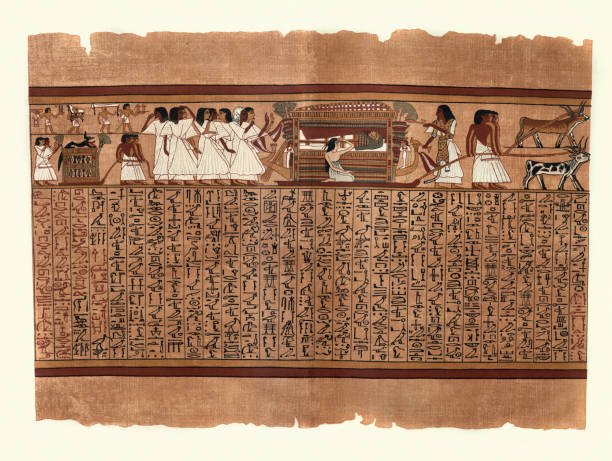Blog
Ancient Artz: Exploring the Rich Legacy of Art Across Civilizations

Ancient Artz refers to the vast and diverse forms of artistic expression from ancient civilizations across the globe. From the breathtaking pyramids of Egypt to the intricate pottery of ancient Greece, ancient art plays a critical role in understanding human history, culture, and the way societies evolved. This article will explore the concept of Ancient Artz, delve into its significance, examine notable civilizations known for their contributions to the world of art, and highlight how ancient art continues to influence contemporary art and culture.
What is Ancient Artz?
Ancient Artz encompasses the artistic creations produced by civilizations before the Middle Ages, typically ranging from the prehistoric era to around the fall of the Roman Empire. This term represents a wide array of art forms, including sculpture, pottery, architecture, painting, and decorative arts. These works were not only aesthetic expressions but also served practical, religious, and political purposes, reflecting the values, beliefs, and technological capabilities of ancient societies.
Each ancient civilization left behind a unique artistic legacy that speaks to their cultural identity, religious practices, and societal structure. The study of Ancient Artz provides valuable insights into how these societies viewed the world, their gods, and each other. Additionally, these ancient works continue to be revered for their craftsmanship, beauty, and ability to tell stories that transcend time.
The Importance of Ancient Artz
The art of ancient civilizations holds a mirror to the past, offering a glimpse into the lives, customs, and beliefs of people who lived thousands of years ago. Here are some of the key reasons why Ancient Artz is so important:
- Cultural Legacy: Ancient art serves as a record of the cultural values and practices of early human societies. From religious rituals to daily activities, these works capture the essence of life in ancient times.
- Technological Advancements: The techniques and materials used by ancient artists reflect the technological advancements of their time. Whether it’s the construction of massive stone pyramids or the development of pottery kilns, ancient art reveals the ingenuity of early civilizations.
- Religious and Spiritual Expression: Much of ancient art was created for religious or spiritual purposes. Temples, statues of gods, and intricate burial artifacts were crafted to honor deities, serve as offerings, or guide the deceased into the afterlife.
- Influence on Modern Art: The legacy of ancient art is still felt in contemporary art and architecture. Many modern artists draw inspiration from the forms, techniques, and symbolism found in ancient art. The revival of classical styles during the Renaissance, for example, was heavily influenced by ancient Roman and Greek art.
- Historical Record: Art often tells stories that written records may omit. In many cases, ancient art provides visual evidence of historical events, social hierarchies, and interactions between different cultures, offering a more complete understanding of ancient history.
Notable Civilizations and Their Artistic Contributions
Several ancient civilizations made lasting contributions to the world of art, each leaving behind distinctive styles and techniques that continue to be studied and admired today. Below are some of the most influential contributors to Ancient Artz:
1. Ancient Egypt
The art of ancient Egypt is one of the most well-known and iconic in human history. Egyptian art was heavily influenced by their religious beliefs, particularly their views on the afterlife. The construction of monumental structures like the pyramids, temples, and the Sphinx remains a marvel of human engineering and artistic skill. Additionally, Egyptian hieroglyphs, tomb paintings, and statues of pharaohs like Tutankhamun serve as vivid reminders of their sophisticated culture and devotion to the gods.
Key artistic features of ancient Egyptian art include:
- Hieroglyphic writing as both an artistic and communicative medium.
- Statues and reliefs of gods, pharaohs, and mythological scenes.
- Funerary artifacts such as sarcophagi and tomb decorations.
2. Ancient Greece
Ancient Greek art is celebrated for its focus on humanism, proportion, and the idealized human form. Greek sculpture, pottery, and architecture have had an enormous influence on Western art traditions. The Greeks perfected the use of naturalism in sculpture, portraying human figures with detailed musculature and movement. Temples such as the Parthenon exemplify the Greeks’ mastery of architecture and their devotion to balance and harmony.
Key elements of Greek art include:
- Sculpture that idealizes the human body, such as the statues of Aphrodite and Athena.
- Pottery with painted scenes depicting mythology, daily life, and athletics.
- Architectural orders like Doric, Ionic, and Corinthian columns, which are still used in modern architecture.
3. Ancient Rome
Ancient Roman art was heavily influenced by the Greeks but developed its own distinctive style, particularly in architecture, sculpture, and painting. Roman artists were skilled in creating realistic portraits and large-scale public works like the Colosseum and aqueducts. Roman art also had a practical side, as much of it was used for political propaganda, emphasizing the power and authority of emperors and the might of the Roman Empire.
Key contributions of Roman art include:
- Mosaics and frescoes that decorated the walls of homes, temples, and public buildings.
- Realistic busts and sculptures of Roman emperors and citizens.
- Monumental architecture, including the use of the arch and vaulting techniques.
4. Mesopotamia
Mesopotamia, often referred to as the “cradle of civilization,” produced some of the earliest known works of art. The art of Mesopotamia is characterized by detailed carvings, cylinder seals, and monumental structures like the ziggurats. Much of Mesopotamian art was tied to their polytheistic religion, depicting gods, kings, and mythical creatures.
Notable features of Mesopotamian art include:
- Bas-relief sculptures depicting scenes of warfare, hunting, and religious ceremonies.
- Intricate cylinder seals used to mark ownership and authenticate documents.
- Temples and ziggurats, massive structures built for religious purposes.
5. Ancient China
The art of ancient China is known for its sophisticated use of materials such as jade, bronze, and silk. Chinese artists excelled in creating bronze vessels, intricate pottery, and elaborate tombs. The Terracotta Army, created to guard the tomb of the first Emperor Qin Shi Huang, remains one of the most remarkable discoveries in ancient art.
Key contributions of ancient Chinese art include:
- Calligraphy and painting on silk, with an emphasis on harmony between humans and nature.
- Bronze sculptures and vessels used in rituals and ceremonies.
- Porcelain pottery, which became a hallmark of Chinese artistry.
Ancient Artz and Its Influence on Modern Culture
The legacy of Ancient Artz continues to inspire contemporary art, architecture, and design. Artists today draw on the symbolism, techniques, and forms of ancient civilizations to create works that connect the past with the present. In architecture, for example, classical elements such as columns and arches are still used in modern buildings, a testament to the lasting influence of Greek and Roman designs.
Moreover, museums around the world continue to showcase ancient art, drawing millions of visitors each year. Iconic works such as the Mona Lisa and Venus de Milo are reminders of how deeply ancient artistic traditions continue to resonate in today’s cultural landscape.
Conclusion
Ancient Artz serves as a window into the world’s earliest civilizations, revealing their values, beliefs, and technological capabilities through timeless works of art. From the monumental structures of Egypt to the intricate pottery of ancient Greece, the art of ancient times remains a crucial part of our global heritage. Studying these works not only enriches our understanding of history but also influences modern culture, showing that the past continues to shape the future.
Frequently Asked Questions (FAQs)
Q1. What civilizations are most associated with Ancient Artz? Ancient civilizations such as Egypt, Greece, Rome, Mesopotamia, and China are among the most notable contributors to the field of ancient art, each leaving behind distinctive works that continue to influence art and culture today.
Q2. What is the significance of ancient art? Ancient art is significant because it reflects the values, beliefs, and technological advancements of early societies. It also provides historical insights into the lives of people who lived thousands of years ago and continues to inspire modern art.
Q3. How did ancient art influence modern architecture? Ancient architecture, particularly from Greece and Rome, influenced modern architectural styles through the use of elements like columns, arches, and domes. Many contemporary buildings still draw on classical designs for their aesthetic and structural elements.
Q4. What are some famous examples of ancient art? Famous examples of ancient art include the Pyramids of Giza, the Parthenon, the Colosseum, the Terracotta Army, and the bust of Nefertiti, among many others.
Q5. What materials were commonly used in ancient art? Common materials used in ancient art include stone, bronze, gold, clay, wood, and jade. These materials were often chosen for their durability, symbolism, and availability in the region.
Q6. How does ancient art differ from modern art? Ancient art often had religious, political, or practical purposes, while modern art is more likely to focus on personal expression, abstraction, or conceptual ideas. However, both ancient and modern art share the goal of communicating through visual means.
Blog
Amanollah Sharaf: Exploring His Legacy and Impact on Modern Thought

Introduction
The name Amanollah Sharaf may not be universally recognized, but for those familiar with his work, it carries significant weight. Sharaf is a prominent figure in the fields of philosophy, literature, and socio-political thought, particularly within the context of Middle Eastern intellectual history. His contributions have influenced various disciplines, spanning from political theory to cultural studies. This article delves into the life, works, and enduring legacy of Amanollah Sharaf, shedding light on his influence in the academic world and beyond.
Who is Amanollah Sharaf?
Amanollah Sharaf is an esteemed scholar, philosopher, and writer known for his critical insights into socio-political issues and cultural dynamics in the Middle East. His works explore themes such as democracy, social justice, human rights, and the interplay between tradition and modernity. Sharaf’s thought is deeply rooted in understanding the historical and contemporary challenges faced by societies in the Middle East, providing a nuanced perspective that bridges the gap between Western and Eastern philosophical traditions.
Early Life and Education
Sharaf was born into a family that valued education and intellectual pursuit. From a young age, he was exposed to a variety of philosophical texts and cultural discussions that shaped his worldview. His formal education took him through some of the most prestigious universities, where he studied philosophy, political science, and history. Sharaf’s academic journey was marked by a quest to understand the complexities of human society, which later became a cornerstone of his philosophical inquiries.
Major Works and Contributions
Amanollah Sharaf’s body of work is extensive, covering various aspects of philosophy, sociology, and political thought. Below are some of his most notable contributions:
- Philosophical Writings: Sharaf’s philosophical works often focus on the concepts of freedom, human rights, and moral responsibility. His writings challenge conventional thinking by encouraging readers to reflect on the ethical implications of their actions in both personal and societal contexts.
- Socio-Political Analysis: One of Sharaf’s key contributions lies in his analysis of socio-political structures in the Middle East. He explores the impact of colonialism, authoritarianism, and cultural imperialism on the region, advocating for a more inclusive and democratic society.
- Cultural Critique: Sharaf is also known for his critiques of cultural practices that hinder progress and innovation. He emphasizes the need for a balance between preserving cultural heritage and embracing modernity, urging societies to adapt to changing times without losing their identity.
- Interdisciplinary Approach: His work is characterized by an interdisciplinary approach that draws from philosophy, history, political science, and cultural studies. This holistic view allows him to offer comprehensive solutions to complex social issues.
Key Themes in Sharaf’s Thought
Amanollah Sharaf’s philosophy revolves around several core themes that are both timeless and relevant to contemporary discussions. Here are some of the central ideas that define his work:
1. The Struggle for Democracy and Social Justice
Sharaf is a staunch advocate for democracy, arguing that it is essential for the realization of social justice. He believes that true democracy goes beyond mere political structures and extends to ensuring equity and human dignity for all.
2. The Clash Between Tradition and Modernity
One of the recurring themes in Sharaf’s work is the tension between tradition and modernity. He explores how societies can embrace progress while respecting their cultural roots. His approach is not about discarding traditions but finding a harmonious coexistence that allows for growth and development.
3. Human Rights and Ethical Responsibility
Sharaf places a strong emphasis on human rights, arguing that ethical responsibility should be at the heart of all social and political decisions. His work calls for a reevaluation of policies and practices that compromise individual freedoms in the name of security or cultural preservation.
4. The Role of Intellectuals in Society
Sharaf believes that intellectuals have a duty to challenge injustices and advocate for change. He sees scholars, writers, and artists as the conscience of society, whose role is to question the status quo and inspire progress.
The Impact of Amanollah Sharaf’s Ideas
The influence of Amanollah Sharaf extends beyond academia. His writings have inspired movements advocating for political reform, human rights, and social change across the Middle East and beyond. Here are some areas where his impact is most notable:
- Political Reform: Sharaf’s ideas have been a source of inspiration for political activists pushing for greater democratic freedoms in authoritarian regimes. His calls for social justice resonate with those seeking to reform corrupt systems.
- Educational Reform: Sharaf’s emphasis on critical thinking and ethical education has influenced educational reforms aimed at fostering independent thought rather than rote learning. His work underscores the importance of an education system that prepares individuals for active citizenship.
- Cultural Renaissance: By advocating for a balance between tradition and modernity, Sharaf has contributed to cultural movements that seek to revive interest in traditional arts, literature, and values, while embracing modern innovations.
Challenges and Criticisms
Like any influential thinker, Amanollah Sharaf’s work has not been without its critics. Some argue that his idealistic vision of democracy and social justice is difficult to implement in the real world, particularly in regions plagued by political instability and cultural conservatism. Others contend that his critique of traditional practices could be seen as an endorsement of Western values over indigenous ones. However, supporters argue that Sharaf’s emphasis on universal human rights transcends cultural boundaries, making his work universally relevant.
Legacy and Influence
Amanollah Sharaf’s legacy is one of intellectual courage and moral clarity. His contributions continue to influence contemporary debates on democracy, social justice, and human rights. Scholars, activists, and policy-makers draw upon his work to address the challenges of the modern world, particularly in regions undergoing political and social transformations.
Conclusion
Amanollah Sharaf remains a vital voice in the landscape of modern philosophy and socio-political thought. His commitment to democracy, human rights, and cultural understanding offers a roadmap for societies striving for progress amidst challenges. Whether through his philosophical treatises, socio-political critiques, or cultural analysis, Sharaf’s work encourages us to think critically about the world we live in and the kind of future we wish to create.
7 Frequently Asked Questions About Amanollah Sharaf
- What are Amanollah Sharaf’s most influential works?
- His most notable works include philosophical essays on democracy, human rights, and the interplay between tradition and modernity.
- What is the central theme of Sharaf’s philosophy?
- Sharaf’s philosophy centers on the need for democracy, social justice, and ethical responsibility, with a focus on balancing tradition with modern progress.
- How has Sharaf influenced political thought in the Middle East?
- His critique of authoritarianism and advocacy for democratic reforms have inspired activists seeking social and political change in the region.
- What is Amanollah Sharaf’s stance on cultural preservation?
- He advocates for a balanced approach that respects cultural heritage while embracing necessary modern advancements.
- Is Amanollah Sharaf’s work relevant outside the Middle East?
- Yes, his emphasis on universal values like human rights and social justice makes his work globally relevant.
- What criticisms has Sharaf faced?
- Critics argue that his ideas may be too idealistic or Western-centric, especially regarding democracy and social reforms.
- How can one access Sharaf’s works?
- Many of his writings are available through academic publications and online platforms dedicated to Middle Eastern studies and philosophy.
Blog
Achieving Excellence in Goalkeeping: A Detailed Look at the Keeper Standards Test

In the world of football (soccer), the role of the goalkeeper is one of the most demanding and specialized on the field. While the other players must be skilled in attacking and defending, the goalkeeper stands as the last line of defense, responsible for ensuring the ball doesn’t find its way into the back of the net. With the importance of this role, there has emerged a standard to measure a keeper’s abilities—the Keeper Standards Test.
The Keeper Standards Test is a rigorous evaluation that measures various skills and attributes that a goalkeeper must possess. From agility and reaction time to decision-making and distribution, the test assesses the core competencies that separate an average keeper from an exceptional one. Whether you’re an aspiring young goalkeeper looking to break into the professional ranks or a seasoned player seeking to refine your skills, understanding and excelling in this test is crucial.
This article will explore the different facets of the Keeper Standards Test, covering what it entails, how it is structured, and why it is becoming the benchmark for goalkeeper development. We’ll also look at how to prepare for this test, avoid common mistakes, and set yourself up for success.
The Importance of Goalkeeper-Specific Testing
While outfield players are often evaluated on passing, shooting, and movement, goalkeepers require a more tailored evaluation process. The nature of their role calls for quick reflexes, excellent positioning, and the ability to read the game. These requirements are very different from the rest of the team, which is why goalkeeper-specific testing like the Keeper Standards Test exists.
The Keeper Standards Test allows coaches and trainers to see how well a keeper can perform under various scenarios, including high-pressure situations. It also provides valuable data on the keeper’s strengths and areas for improvement, offering a comprehensive picture of their capabilities.
Key Areas Assessed in the Keeper Standards Test
The Keeper Standards Test focuses on various skill sets that are crucial to a goalkeeper’s success. These include:
1. Reaction Time and Reflexes
One of the most important aspects of goalkeeping is the ability to react quickly. Whether it’s a close-range shot or a sudden deflection, a goalkeeper’s reflexes often make the difference between conceding and making a crucial save. In the test, this is typically assessed through rapid-fire drills where the goalkeeper has to react to multiple shots in quick succession.
2. Shot-Stopping Ability
A goalkeeper’s primary responsibility is to stop the ball from entering the goal. Shot-stopping drills form a significant part of the Keeper Standards Test, evaluating how well the keeper can block both powerful and precise shots. This can involve long-range efforts, close-range shots, and one-on-one situations where decision-making is key.
3. Positioning and Footwork
Good positioning is essential for a goalkeeper, as it allows them to cover the goal efficiently and react to threats. The test assesses how well the goalkeeper positions themselves relative to the ball, their defenders, and the opposition. Proper footwork is also critical as it enables a keeper to move swiftly across the goal line.
4. Aerial Ability
Goalkeepers are often called upon to claim crosses or deal with aerial balls. This aspect of the test measures how well a keeper can judge the flight of the ball, command their area, and make clean catches or punches when the ball is crossed into the box.
5. Distribution and Ball Handling
Modern goalkeepers are not just shot-stoppers; they are also key distributors of the ball. The test evaluates a goalkeeper’s ability to distribute the ball effectively, both by hand and by foot. This includes accurate throws, long goal kicks, and playing out from the back under pressure.
6. Communication and Decision-Making
Goalkeepers must constantly communicate with their defenders and make quick decisions. The test includes scenarios that require the keeper to organize the defense, decide when to come off their line, and handle high-pressure situations effectively.
7. Mental Toughness and Resilience
The mental aspect of goalkeeping cannot be overstated. A good goalkeeper must be able to shake off mistakes quickly and stay focused throughout the game. This part of the test assesses how well a keeper can maintain concentration, recover from errors, and perform under pressure.
Structure of the Keeper Standards Test
The Keeper Standards Test is typically divided into several sections, each designed to assess different aspects of a goalkeeper’s skill set. A typical structure may look like this:
- Warm-Up and Agility Drills
The test begins with a series of warm-up exercises to prepare the goalkeeper physically and mentally. Agility drills, such as ladder runs and cone exercises, are used to assess footwork and overall quickness. - Shot-Stopping Drills
The next phase involves shot-stopping exercises from various distances and angles. This can include free-kicks, penalties, and one-on-one situations to test the goalkeeper’s reflexes and decision-making under pressure. - Aerial Ball Drills
The goalkeeper will face a series of aerial challenges, such as crosses, corners, and long balls, to assess their ability to judge the flight of the ball and command the penalty area. - Distribution Tests
The test moves into the distribution phase, where the goalkeeper is required to throw, kick, and pass the ball accurately to teammates under different conditions. - Game Scenario Simulations
Finally, the goalkeeper will participate in a series of game-like simulations. These scenarios are designed to mimic real match situations and test how well the keeper can apply their skills in a high-pressure, game-like environment.
Each section of the test is graded based on performance, with certain areas carrying more weight depending on the level of competition (youth, amateur, professional).
How to Prepare for the Keeper Standards Test
Preparation is crucial to performing well in the Keeper Standards Test. Here are some tips to help you get ready:
1. Train Reaction Time and Reflexes
Practice drills that improve your reflexes, such as facing rapid shots from different angles. You can use reaction balls or quick-passing drills to enhance your reflexes and reaction time.
2. Work on Footwork
Quick footwork is essential for positioning. Use ladder drills, cone exercises, and quick side-to-side movements to improve your ability to move swiftly and efficiently in goal.
3. Focus on Distribution
Distribution drills, including both short and long-range passes, should be incorporated into your training. Practice both throwing and kicking the ball accurately to improve your control and precision.
4. Improve Your Aerial Game
Work with a coach or teammate to simulate crosses and corners, focusing on timing your jumps, commanding your area, and catching or punching the ball cleanly.
5. Mental Training
Goalkeeping requires mental resilience. Visualization techniques, mindfulness practices, and mental toughness exercises can help you stay focused and recover quickly from mistakes during the test.
Common Mistakes to Avoid During the Keeper Standards Test
Even the most skilled goalkeepers can falter during the Keeper Standards Test if they are not aware of common pitfalls. Here are some mistakes to avoid:
1. Overcommitting
One of the biggest mistakes goalkeepers make is overcommitting, especially during one-on-one situations. Stay patient and focus on positioning rather than rushing out too early.
2. Poor Footwork
Goalkeepers who neglect their footwork may struggle to get into the right positions to make saves. Footwork is key to maintaining balance and reacting quickly, so make sure it’s a central part of your preparation.
3. Ineffective Communication
Failure to communicate effectively with defenders can lead to confusion and missed opportunities. Make sure you practice organizing your defense and giving clear, concise instructions.
4. Misjudging Aerial Balls
Aerial ability is one of the hardest skills to master. Misjudging crosses or long balls can lead to easy goals. Focus on your timing and decision-making when dealing with aerial threats.
5. Neglecting the Mental Side
Many goalkeepers focus solely on physical skills and neglect the mental aspects of the game. Mental resilience is key to staying composed under pressure, so incorporate mental training into your routine.
Conclusion
The Keeper Standards Test offers a detailed assessment of a goalkeeper’s abilities, ensuring that they possess the skills needed to excel in the modern game. Whether you’re an amateur goalkeeper striving to go pro or a professional looking to refine your craft, excelling in this test will set you apart. (more…)
Blog
Understanding the 92336-1832 Area Code: What You Need to Know
-

 Marketing2 months ago
Marketing2 months agoExploring www.goodmooddotcom.com Hotels Category: A Comprehensive Guide
-

 Real estate2 months ago
Real estate2 months agoEnhancing Mobile Home Exteriors: Trends, Materials, and Design Ideas
-

 Tech2 months ago
Tech2 months agoTsumino-blog.com News: A Closer Look at the Popular Platform
-

 Business2 months ago
Business2 months agoCFBWH: A Deep Dive into Its Importance and Relevance
-

 Latest News2 months ago
Latest News2 months agoAncient Grains in a Healthy Cereal: A Nutritious Choice
-

 Business2 months ago
Business2 months agoBest Cars of 2020: A Comprehensive Guide from Guia-Automovil.com
-

 Entertainment2 months ago
Entertainment2 months agoSamsung H-Fi 5732B: A High-Fidelity Audio Experience
-

 Lifestyle2 months ago
Lifestyle2 months agoImportant Cool Mom Food: How to Keep Kids Happy and Healthy

